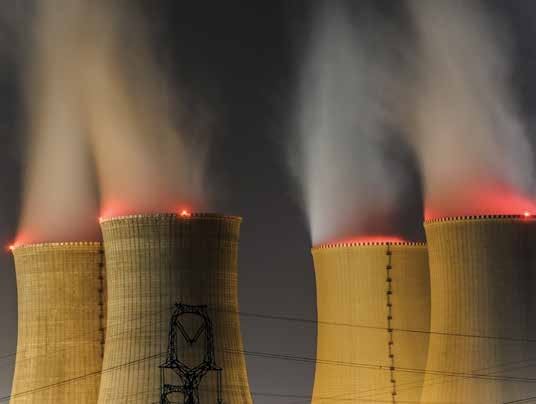3.3.1 Carbon footprint
Any human activity that uses energy has an impact on the climate.
We drive cars, travel to other cities and countries by aircraft, use the TV and computer, cook food, and put food in the refrigerator. We cut down forests to make paper and furniture. We switch on the heating in winter and air-conditioning in summer, and we use electric lights in our homes all year-round. By doing all these things, we each leave our own personal carbon footprint in the world.
The carbon footprint of a city or country is the total amount of all greenhouse gases that all individuals and organizations within the city or country produce by the things they do, events they take part in and products they consume directly or indirectly.
Figure 3.3.1 Examples of greenhouse gas emission sources



Environmentally responsible behaviour means thinking about how you can reduce greenhouse gas emissions and your own carbon footprint.
It is common practice to translate all GHG emissions into CO2 equivalent for ease of understanding and calculation. This amount is shown as units of CO2 equivalent.
Carbon footprint
- E-mail-message – 4 g
- The same message with a large attachment – 50 g
- A plastic bag from a shop – 10 g
- A 5-litre bottle of water (local production) – 110 g
- An average bottle – 160 g
- An ice cream – 500 g
- A pair of jeans – 6 kg
Direct emissions are the amounts of carbon dioxide generated from the use of fossil fuels – for example, the amount of greenhouse gases emitted during operation of a factory or a vehicle engine.
Indirect emissions are the amounts of CO2 released into the atmosphere when energy is produced and transported to make the products you buy and the services you need. This is the part of the carbon footprint we can influence: we can think twice and not buy disposable cups, think twice and walk instead of going by car, think twice and not use the washing machine at half load.
Calculating the size of our carbon footprint (especially indirect emissions) is difficult, because we must consider many different factors and find a lot of information. In addition, the carbon footprint of a product will always be the same for the producer, but it will be different for different consumers because transport and other costs of delivering the product to the consumer must be considered.
For example, the carbon footprint of an apple from the garden, eaten under the tree where it grew, is 0 g of CO2. If you buy apples grown in your region in season (i.e., in the summer and early autumn), the carbon footprint of an apple is 10g of CO2. The carbon footprint of an imported apple (for example, one brought from Italy) will be 150 g of CO2.
Environmentally responsible firms can offset their carbon footprint by investing in climate pro- jects, by planting trees or obtaining certificates from reputable carbon-offsetting companies.
Products or services with low or zero CO2 emissions, or whose emissions have been offset, can receive low-carbon or carbon-neutral labeling to demonstrate their climate-friendliness. Such labeling influences the choice of consumers in favor of this particular product or service.
Examples of carbon-neutral labels:






